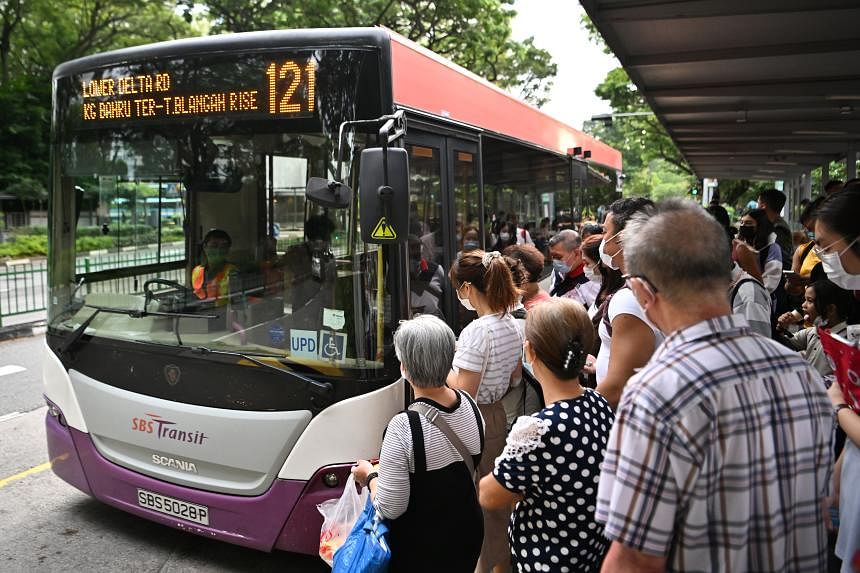SINGAPORE - Fares have to keep pace with the rising costs of operating public transport or the system will become financially unsustainable, said Transport Minister S. Iswaran.
He told Parliament on Tuesday that annual fare increases in the past 10 years have not kept pace with operating costs – the rises have been just 1 per cent a year when costs have gone up by 7 per cent annually.
The Government has stepped in to fill this gap to the tune of more than $2 billion a year, he noted, with an additional $200 million subsidy for the coming year after a large proportion of this year’s fare increase was rolled over to future fare reviews.
Mr Iswaran said that while the Government is fully committed to keeping public transport affordable, the ongoing fare formula review offers an opportunity for a “hard look” at how fares should be calculated.
“Looking ahead, we need to ensure that fares keep pace with the rail expansions and cost increases. Otherwise, our public transport system will become financially unsustainable, and that will be to the detriment of commuters and taxpayers,” he said in response to several MPs who asked about public transport fare hikes.
The Public Transport Council (PTC) will continue to take into account prevailing “economic and social considerations” when it decides on fare adjustments in future reviews, he said.
From Dec 26, MRT and bus fares will rise by four to five cents – a 2.9 per cent hike. It could have been much higher, with the maximum fare increase under the fare formula this year allowing for a 13.5 per cent rise, driven largely by surging energy costs. The PTC rolled over the remaining 10.6 per cent increase to future fare reviews.
The council is currently relooking how fares should be calculated to account for changes in commuting patterns and to make public transport more financially sustainable, and should complete its review by the first half of 2023.
The existing fare formula incorporates indexes – such as core inflation, wage growth and energy prices – that reflect the cost of providing transport services. The PTC then derives the maximum allowable rise, before moderating it based on prevailing economic and social conditions, taking into account factors such as overall economic growth, wage growth and unemployment rate.
Mr Saktiandi Supaat (Bishan-Toa Payoh GRC) asked if the gap between fares and operating costs is financially sustainable.
In response, Mr Iswaran cited the ongoing fare formula review and said: “I think we all need to take a hard look at this. What exactly is the way forward for us, and this is not just about the sums, but it really comes down to an overall discussion on the compact we expect.”
He cited public transport vouchers and concession fares for seniors, students, lower-wage workers and people with disabilities as examples of how the Government will continue to address the needs of vulnerable commuters. He also noted that the percentage of income that the average public transport user spends on public transport has fallen from 3.5 per cent in 2012 to 2.5 per cent in 2021.
Mr Gerald Giam (Aljunied GRC) asked whether the Excess Wait Time scores and On-Time Adherence scores of bus services – which measure the punctuality of buses and how well they match their schedules – were taken into account when deciding on this year’s fare increase.
Mr Iswaran said all bus services had met the required standards, and that the maximum scheduled time between buses of the same service during peak periods had also fallen from 30 minutes to 15 minutes in the past decade.
Asked by Mr Giam what is an acceptable interval between same-service buses, Mr Iswaran said it is difficult to settle on a number, since this depends on the time, location and bus service.
“Bus contracts spell out clearly the performance requirements, and we hold the operators who are awarded the contracts closely to the delivery of those KPIs (key performance indicators),” he said.
Further reducing bus intervals will come with extra costs, Mr Iswaran added.
“Every time we reduce headways, it means you have to have more buses, and therefore you also need more bus captains. Costs will go up, and we have to find ways to address this…
“As this year’s exercise demonstrates, there is a major cost overhang that we are carrying.”


